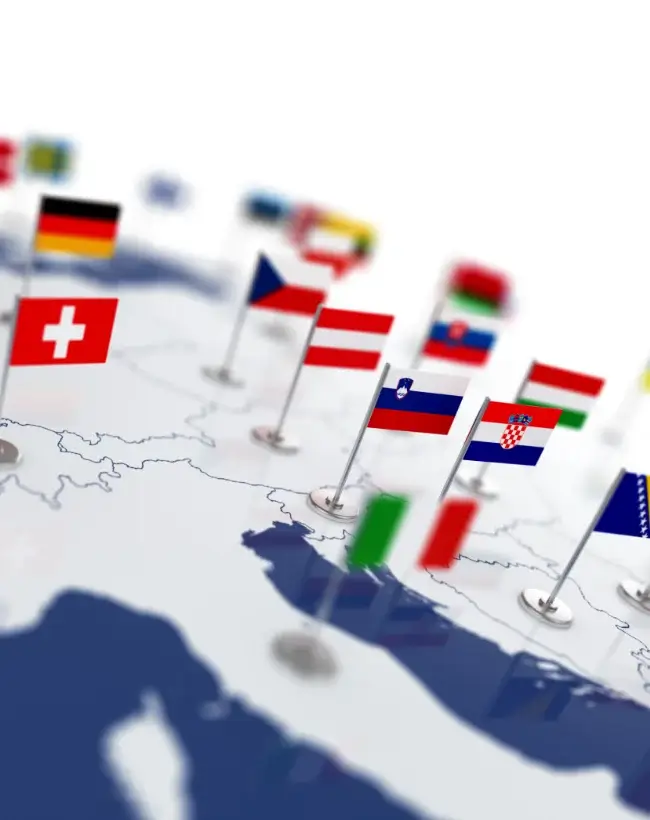US Department of State – Hearts of Europe
Enhancing the image of the United States in the world, starting with perceptions in three similarly sized countries in Europe.

Situation
The global public image and favorability of the United States are not at the level desired by the US Department of State based on the qualities and achievements of the United States. Citizens of the world often act favorably toward the US by buying and admiring American products, by considering the United States a very desirable travel destination, by holding education in American universities in high regard – but then speaking unfavorably about the United States in general.
A number of other countries have been very aggressive in the fight for the hearts and minds of citizens in Europe and the rest of the world. The resulting competition, often including deliberate disinformation and propaganda, is generated in particular by Russia and China, but also by the EU, Japan, India, Australia, Middle Eastern nations, and other players vying for relative favorability.
Through a public RFP, the US Department of State selected Transiris from a pool of the most respected names in marketing and advertising to provide research, marketing, and communications services, working in close cooperation with the US Embassies in Vienna, Prague and Budapest, under the leadership of Trevor Traina, the American Ambassador to Austria. Based on his own corporate experience, Ambassador Traina was particularly interested in bringing our corporate marketing experience to the public diplomacy space.


Solution
Transiris organized the project around five research tracks (desk research, qualitative interviews, public diplomacy workshops, quantitative research, and qualitative focus groups), two deliverable sets (Strategy and Branding), and three operational phases (Research, Design, and Testing). Based on this approach, we devised a thorough plan that included a very large number of people and activities, and that fit it into the aggressive timeline and budget mandated by the USDS.
It became quickly obvious that the existing nation branding and public diplomacy models established in academia and in practice did not fit the United States, which is an outlier among world countries due to its ubiquity, interest, recent history, and polarization. While the ICON model was partially used, we developed a new, proprietary model specifically for United States Nation Branding — the E.R.A. model (Emotional Resonance, Rational Resonance, and Associative Engagement).
Once research advanced and the ERA model was developed, we worked with US ambassadors and USDS personnel around the world to draft, validate, and refine components of the strategy. We segmented the target populations, developed messaging and tactics for each combination of attributes and channels, and developed analytical models for measuring effectiveness.
Our resulting strategy and creative efforts were herculean. A detailed, actionable strategy was developed for each ERA component, and over 40 branding concepts were drafted based on internal workgroups, input from the field, and creative sessions within the agency. Concepts were narrowed down to 20, then to four. The four branding concepts were tested in multiple in-country focus groups. In the end, the strategy was completed and adopted, and two branding concepts were selected, refined, and implemented.
Outcomes
The successful work and strategic framework from Transiris were incorporated into the USDS strategy and the larger US public image efforts to reorganize particular elements of The United States Information Agency (USIA) under The U.S. Agency for Global Media (USAGM) and the USDS.
In recent years, the United States has revamped its global Public Diplomacy efforts to better compete for the minds and hearts of global citizens. We are proud to contribute to this important work and assist the United States in regaining lost ground.
